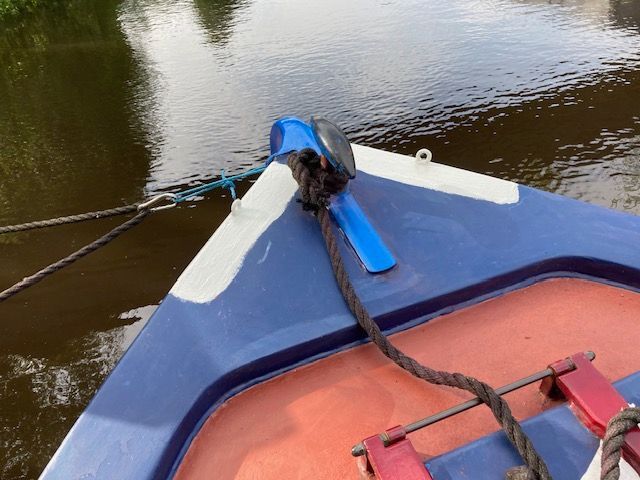-
Posts
11,470 -
Joined
-
Last visited
-
Days Won
4
Content Type
Profiles
Forums
Events
Gallery
Blogs
Store
Posts posted by dmr
-
-
A nice thing about the Arduino project is that there are a lot of ready made code libraries, especially for hardware drivers, so you can get going quickly without doing too much nitty gritty stuff. I think getting a mix of hobbyists and professional into the same project was a good way to go.
Software is pretty easy, give it a go, if you can design electronics you can almost certainly write the software for it.
-
I've used the nano quite a bit, but it still eats too much power.
I like high level languages, my first ever proper job was writing assembler and I promised myself never to do it again.
Personally I don't like C and the "curly brace" syntax but its actually a very good language for Arduino/mico controller stuff, and has the advantage over assembler that it might be possible to re use the code on a different controller.
I think there are a fair few electronic engineers and firmware writers on this forum.
-
The Arduino is a bit power hungry for a device that needs to be on all the time and running off the boat batteries. There are some new impressive looking micro controllers now available and I think some might be compatible with the Arduino IDE. I have not investigated these myself but a www search might be worthwhile. I think some how integrated Bluetooth etc.
-
 1
1
-
-
The CRT phone anseering folk are a bit variable, anything from really good to chocolate teapot. Leave it a couple of days and phone again and you might get a better one.
-
 2
2
-
-
The Liverpool swing bridges are entertaining, everything one is different, keep an anti vandal and a BW key in your pocket.
Unless its changed, the most entaining one has a power console with a BW key, the lights flash, barriers come down, and then nothing....you have to go and swing the bridge by hand.
-
 1
1
-
-
19 minutes ago, Stroudwater1 said:
Is it really that bad at the North portal? We’ve moored there a couple of times though that was a long time ago. Didn’t feel unsafe then, no ghosts either.
I don't know, there has been trouble in the past from local youth (can't say more in these politically correct times), but once a place on the cut gets a bad reputation it appears to take at least 20 years to get over it. Hardings wood is a nice spot, tunnel entrance is all dark in a bit of a cutting so stop at Hardings.
36 minutes ago, 5239 said:I must say of if I were on a hire boat I probably wouldn’t care much where I over night…it’s not my boat,
I liked/preferred the pub by the lock.
Beer not as good but the pub was more … lively.Went in there ages ago and it was no good, but think it has changed hands since and now looks more tempting. I think it was lager only/no handpumps when I went in. Bluebell still has good beer but its not quite as unique as it used to be.
-
I don't think the BlueBell is quite as good as it used to be, but still well worth a visit.
-
There is a long mooring one lock down from the tunnel pound, Hardings Wood. I know one boat who had trouble there several years ago but otherwise its safe and usually has several boats moored there. Easy walk to a big shop (Tesco?) and also to the BlueBell pub which used to be, and probably still is, a must visit place for beer drinkers.
We have stayed there many times with no issues.
-
 1
1
-
-
11 hours ago, David Mack said:
At my last heating oil delivery to our house the tanker tanker driver asked to see inside the tank to confirm there was enough room for the quantity of oil I had ordered. First time I have had this request in 30 years living at this house. But apparently the delivery nozzles don't have the automatic cutoff that we are all used to on petrol pump hoses.
(And to cap it all, having struggled to open the cover on the top of the tank I couldn't damn well get it closed again properly after he had gone).
Tanks usually have a big BSP connection for the filler hose, but I note that the delivery man does not use that, he just dangles his hose into the big inspection cover, and he does sometimes ask me to confirm that there is space available.
-
A fuse blowing with heat and sparks etc and igniting any hydrogen given off by the batteries.
Should not apply to Lithiums, also it is possible to get enclosed safe fuses.
-
My guess is that they (or somebody else who they know) have had an unpleasant visit from Cusoms and Excise or Trading Standards or whoever, and it has been found that their metering system was not accurate for small quantities of fuel, and they have possibly over-reacted to this a bit.
-
 1
1
-
-
2 minutes ago, 5239 said:
That was Roman way weren’t it?
I believe so, and possibly the origin of the saying "getting the sh*ty end of the stick"
-
 1
1
-
-
13 minutes ago, 5239 said:
if I remember right it had a shiny side and a rough side,the shiny side would…
well no I’ll stop,
but there again there were the days of using newspaper too,
maybe we’re all namby pambies now.
Perhaps practicing Istinja is the way forward?
sponge on a stick ? 😀
-
Its a sick joke from the old days, little children have just learned how to wipe their own bums when they are sent to school and encounter Izal 😀, it does not clean, its just spreads the stuff around.
When my children started school they had Izal, myself and other parents comnplained (and pointed out that the teachers did not have Izal in their toilets).
School agreed to change to proper paper but not till stock of Izal exhausted. Year later Izal still there. It appeared that their stock was not going down......and thats because all the little kids (mine included) took their own roll of proper paper to school 😀
-
 2
2
-
-
If in doubt test a bit first. Some now claim to contain a bit of cotton or plastic or something, they still appear ok but best avoided.
If you run out do not be tempted to use the kitchen roll, especially Regina Blitz, its indestructable.
Izal is Not toilet paper, I dunno what it is but its not toilet paper 😀
Absolutly no wetwipes, some clain to dissolve in water, I tested one in a jamjar of water and gave up after year, still intact.
-
 1
1
-
-
Done Liverpool several times, had one very minor incident many years ago. You can easily get out of the main urban bit in a day, but a few boats even stop in those "bad" bits.
-
12 minutes ago, agg221 said:
One other thing to mention - pigment is expensive, resin is cheap. It is fairly obvious therefore how different paint brands can be sold at different prices. Paint really is one of those things where you get what you pay for, typically more pigment in the better brands. This gives better colour coverage, lower permeability to air and water and a stronger paint, particularly true in a single pack paint where the resin is not as strong. There is therefore a very good reason to use a brand based on recommendation. FWIW, International, Hempel, Jotun and Epifanes all spring to mind immediately as high quality brands. There are others too such as PPG Sigma but they are more niche, but what it does mean is if you spot something locally that appears to be a good deal, from an unknown brand, it is worth checking online whether that is an uncommon high quality brand or something cheap and cheerful.
Alec
I am using Jotun 90 in a light grey colour. I note that the price from SML is a base price plus an additional cost based on the chosen colour.
as for mixing two pack, I am confident about mixing small amounts of two pack (Jotun 90). Half a shot glass is about my minumum, and collecting the shot glasses can be fun 😀 In addition to the digital drug dealer scales, part B might need a bit of warming to pour nicely, and needs decanting into a small container that is easy to pour from. An old glass spice jar is good, (and not filled to the top). As quantities get smaller it obviously gets a bit harder to do an accurate mix. Mixing also needs care to make sure the stuff stuck to the sides of the shot glass gets properly mixed in etc.
and don't mix outdoors on a windy day.
-
 1
1
-
-
Ive not used two pack topcoats so really should shut up 😀, single pack must be easier to work with, though mixing very small quantities of jotun 90 is relatively quick and easy with a cheap set of drug dealer scales so topcoat should be similar. I suspect brushing anything but a small area will need more skill with two pack topcoat.
One pack paints are a complicated subject, they are referred to as oil based but almost all are alkyd (some chemical) but then modified with silicone or polyureEhane to give slightly different advantages. Some are sold as polyurethane, not sure if these are a modified alkyd or just polyurethane. Most of the paints are much of a muchness. I suspect Craftmaster, symphony, Toplac etc are all very similar, but a few are significantly different. I think epifanes is a different chemistry, and Rylands (now hard to get) might be a bit different.
As I keep saying though, I am only a boater/very amateur third rate painter.
-
 1
1
-
-
The (only?) advantage of a single paxk topcoat is that it will be easier to make small repairs in the future.
-
 1
1
-
-
Once a thread goes beyond three pages its pretty certain its gone off topic and likely degenerated into silly arguments (mentioning no names). So just ignore the big threads.
What is really bad is when posters start to add new and interesting posts to the end of a long old thread because I will likely not read it 😀
-
1 hour ago, Mark R said:
Thanks guys, are any of you able to suggest a suitable paint that can be used as an undercoat over the Jotamastic? The reason I ask is because I happened to go to Manor Coatings, a local paint manufacturer (recommended by a boat painting business) yesterday to discuss which of their products might be used. I was told that I'd need a 2 pack undercoat to go over epoxy and that they couldn't recommend any of their products. This led me to phone Jotun and they recommended their Pilot II paint (an alkyd based, single system paint), I felt like the guy I spoke to wasn't really that experienced as he had to discuss this and another question with a colleague, he did invite me to send an email and I'd get a more detailed response - I'll post that here when it comes. Pilot II appears to be a top coat and not an undercoat, so not sure if this is wise. Two undercoat paints I've seen are:
https://www.symphonynarrowboatpaint.co.uk/undercoats/undercoat-grey.765382
So Jotun are saying that a single/alkyd paint is fine over epoxy and, as you would reasonably expect, are suggesting their own brand rather than Craftmaster/Toplac/Several others. As I have said elsewhere, Joton do both Pilot (big pots) and Lustre(small pots/more expensive) and SML said that Lustre is better for brush/roler and Pilot is better for professional use/spraying. This might be true or might just be a marketing thing.
I like Craftmaster high build undercoat but I suspect any reputable undercoat would be fine, and Matty does painting much more seriously than I do. I would feel safer using boaty type paints rather than decorators paints unless other with first hand experience give a recomendation.
25 minutes ago, blackrose said:Hempel Primer undercoat is a good one.
I'm not sure you're correct here. Presumably by "time delay" you mean the maximum overcoating time? Jotun do publish figures in their TDS for maximum overcoating times when painting other types of paint on top of Jotamastic including acrylic and polyurethane paint.
The maximum overcoating times given by Jotun relate to the "Maximum time before thorough surface preparation is required" (as quoted from the previous page to the image below). So while I'm not sure about alkyd paints, single part paints will chemically bond to epoxy if applied within these times
In any case the OP is going to key the surface for smoothness rather than bond strength so it's a moot point.
Yes, I saw that as well and thought it a bit strange, but we have to hope that Jotun know their stuff. I took the opposite view and was a bit concerned about putting single pack over two pack before the two pack was fully cured, but looks like its fine, it hasn't fallen off yet 😀
The aphids or whatever are having a bumper year so an additional problem for me is cleaning the sticky mess off the boat between coats, and the sticky stuff extends a fair way beyond the over hanging trees.
-
 1
1
-
-
-
41 minutes ago, Mark R said:
Thanks @dmr, sounds like I have enough coating to play with. I just need to be careful when sanding those curved edges!
Yes I forgot to say thay, even epoxy goes through very easily on an edge, if it all goes wrong you can always put a bit more Jotun on😀. If you use Jotun 90 with wintergrade hardener you can easily do two coats on the same day at this time of the year.
Just to get my poster credibility, I have done similar myself quite a few times but only on very local repairs, I don't think I would fancy sanding a whole boat. Will be doing a bit of epoxy sanding and an undercoat later this morning. Note the use of light grey Jotun 90.
40 minutes ago, Mark R said:@blackrose, thanks for you comment. Yes the primer is above water level, the undercoat will be single part. I've read the technical data sheet several and have spoke to Jotun 3 times regarding the product too, one of which was to enquire about the differences between 87 and 90. Jotamastic 87 was chosen as it was in stock at the time and improvements of 90 weren't so critical given it's intended use. In terms of painting over the epoxy I'm aware that I have a bit of time before needing to key the surface, that's no concern, the peaks are more the reason for giving it a sand.
Im not sure about the time delay before keying the surface as its not like for like.
Both epoxy and Alkyd paints take a while to fully set so a second coat will chemically bond to the previous one during this time. After a time keying is needed to give a rougher surface to help physical bonding as there is no chemical bonding. The single pack/alkyd undercoat will never chemically bond to the epoxy so a bit of sanding is always a good idea.
I agree with your comment that Jotun 90 is not that different to 87. The availability of 90 in any colour you fancy is possibly its biggest advantage.
-
 1
1
-
-
4 coats is plenty, Jotun say 2 is ok above the waterline, so you should have plenty of thickness.
A lot depends on how rough your surface is. It can take a LOT of coats of undercoat to cover significant roughness.
A sand of the Jotun to take the shine off is a good idea. When you sand and dust off you will see how rough it is, the peaks will have sanded but all the pits will still be a bit shiney. I reckon carefully sand till you have taken att the peaks/high spots almost totally away, then undercoat.
and if put a coat of undercoat on first its even easier to see what the sanding is acheiving.
-
 2
2
-






Is the Kennet & Avon really *that* bad in the summer?
in Holidays Afloat
Posted
Top of Crofton flight to top of Wootton Rivers flight via the Bruce tunnel and Burbage Wharf.